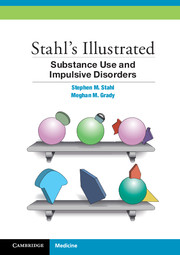Book contents
- Frontmatter
- Preface
- Contents
- CME Information
- Objectives
- Chapter 1 Substance Use and Addiction: An Overview
- Chapter 2 The Neurobiology of Reward and Drug Addiction
- Chapter 3 Alcohol
- Chapter 4 Opioids
- Chapter 5 Nicotine
- Chapter 6 Stimulants
- Chapter 7 Marijuana
- Chapter 8 Other Drugs of Abuse
- Chapter 9 Psychosocial Treatment for Substance Use Disorders
- Chapter 10 Disorders of Impulsivity and Compulsivity
- Summary
- Abbreviations
- References
- Index
- CME: Posttest and Certificate
Chapter 3 - Alcohol
Published online by Cambridge University Press: 05 February 2013
- Frontmatter
- Preface
- Contents
- CME Information
- Objectives
- Chapter 1 Substance Use and Addiction: An Overview
- Chapter 2 The Neurobiology of Reward and Drug Addiction
- Chapter 3 Alcohol
- Chapter 4 Opioids
- Chapter 5 Nicotine
- Chapter 6 Stimulants
- Chapter 7 Marijuana
- Chapter 8 Other Drugs of Abuse
- Chapter 9 Psychosocial Treatment for Substance Use Disorders
- Chapter 10 Disorders of Impulsivity and Compulsivity
- Summary
- Abbreviations
- References
- Index
- CME: Posttest and Certificate
Summary
Alcohol use disorder, like other substance use disorders, is a neurobiological illness in which the normal reward circuitry is changed due to repetitive use of the drug. Knowing the pharmacology of alcohol is therefore important for understanding how addiction and dependence to alcohol take place as well as how they can be treated. This chapter reviews the neurobiological effects of alcohol as well as management strategies for alcohol use disorder, from screening and diagnosis to treatment selection and monitoring.
In the VTA, alcohol acts at presynaptic metabotropic glutamate (mGlu) receptors and presynaptic voltage-sensitive calcium channels to inhibit glutamate release. Alcohol may also have direct or indirect effects on reducing the actions of glutamate at postsynaptic NMDA receptors and postsynaptic mGlu receptors.
Alcohol enhances GABA release by blocking presynaptic GABA-B receptors. It also acts at postsynaptic GABA-A receptors, particularly those of the delta subtype, which are responsive to neurosteroid modulation but not to benzodiazepines.
Alcohol also has actions at opioid receptors. Opioid neurons, which originate in the arcuate nucleus and project to the VTA, synapse with GABA-ergic interneurons and presynaptic nerve terminals of glutamate neurons. Inhibitory actions of opioids at mu opioid receptors there cause disinhibition of dopamine release in the nucleus accumbens. Alcohol either directly acts upon mu receptors or causes the release of endogenous opioids such as enkephalin.
Pharmacological treatments for alcohol use disorder have been developed utilizing this understanding of alcohol's actions and are shown in Figures 3.11 through 3.16.
A standard drink contains approximately 14 grams (0.6 fluid ounces, 1.2 tablespoons) of pure alcohol. This translates to approximately 5 ounces of table wine, 12 ounces of beer, or 1.5 ounces of hard alcohol.
To put this in perspective, a typical bottle of wine contains 5 standard drinks (approximately 25 fluid ounces), a typical can of beer is 1 standard drink (12 ounces), and a typical shot of hard alcohol is also 1 standard drink (1.5 ounces). In restaurants and bars, however, a single “drink” may actually be more than 1 standard drink: a serving of draft beer may be more than 12 ounces (e.g., a pint is 16 fluid ounces), while mixed drinks may contain more than 1 shot of alcohol. Thus, without clarifying, a patient's alcohol intake may easily be underestimated.
- Type
- Chapter
- Information
- Publisher: Cambridge University PressPrint publication year: 2012



